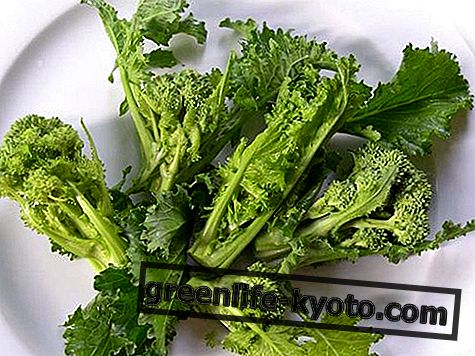The homeopath leads the being back to its psychophysical balance by working on the double front of care and prevention . Let's find out better.

What the homeopath does
The homeopathic substances commonly used for therapeutic purposes come from the plant kingdom (70% of homeopathic remedies), animal and mineral. All are subjected to a particular dilution and shaking process, which has the purpose of eliminating the toxicological properties, enhancing the therapeutic ones.
The most frequently used pharmaceutical forms are globules and granules. The homeopath prescribes the remedy based on the different psychophysical characteristics for each patient; this implies an absolute listening and a human approach to the patient, to the illness, or rather to the person. In the choice of the homeopathic remedy, therefore, the homeopath must always take into consideration in detail the location, character and emotional aspect of the patient.
The principle that homeopaths obey is Similia similibus curantur, outlined and explained by the founder of the discipline, Samuel Hahnemann: "Use the drug to artificially evoke a disease possibly similar" for the illness to be healed.
Each homeopath can feel closer to a single- minded approach (prescription of a single remedy aimed at covering the set of identified symptoms), pluralist (contemporary prescription of several remedies), and complexist (administration of many medicines).
What does the homeopath care for?
A fundamental postulate of homeopathy is that man in life possesses a vital force, a vivifying energy, which pervades his organism, his body and his mind, which harmonizes all the physiological functions and his senses.
This vital energy, when it is in equilibrium, carries out a protective activity against external pathogenic factors; the homeopath intervenes preventively and effectively on the alteration of this balance.
The list of diseases treatable with homeopathy is very vast, but it is important to reiterate that, before the illness, the homeopath treats the patient, regardless of the name that has been associated with the disorder. Homeopathy is effective both in cases of organic, functional, acute or chronic disease.
You can learn more about the origins, benefits and practice of homeopathy

Become a homeopath
Homeopaths are specialized doctors who, after a single-cycle degree in general medicine (6 years), have opted for the specialization, lasting 4 years in homeopathy.
The specialization in homeopathic medicine is a possible choice that the doctor can take, in addition to that in anthroposophic medicine and that in homotoxicology, without prejudice to the specializations of conventional medicine. The courses are held by the Fiamo schools (13 throughout Italy), by independent schools and by Simo schools (Bologna and Trentino Alto Adige).
The specialization includes a minimum of 600 hours of training-training, both theoretical and practical, and various seminars. At the end of the course attendance a diploma or certificate is issued. In order to be able to practice the profession independently, at least two years of practical experience is required, through which it is then possible to enroll in the National Register of Homeopathic Physicians.
How to become a homeopath?
A session from the homeopath
The body speaks and the words with which the patient describes his discomfort become for the homeopath an open window on the path of care. For this reason the homeopathic visit is essentially divided into two main moments : in the first part the doctor tries to get in touch with the patient in order to outline a generic picture that contains the family antecedents, those related to the period of development, as well as on any diseases of the past and the relative care performed.
The second part, on the other hand, focuses on the physical examination of the individual organs and systems, exactly as in a traditional medical examination . Each question that the homeopath asks his patient has the ultimate goal of moving the goal of treatment from the single symptom or disease of the moment to the whole person understood as sick. Once the alteration of the internal harmony of the organism has been identified, the homeopath studies the homeopathic remedy to be administered that is more suitable for treating the disorder and restoring the functional balance of organs and systems.
The homeopath in Italy and abroad
Approximately 8 million Italians treat themselves with homeopathy and the number of doctors on the national register of homeopathic doctors is growing. Nevertheless in Italy there is no specific legislation on homeopathy, despite dozens of proposals in Parliament: provisions concerning the exercise of homeopathic medicine are traceable either in resolutions of the Medical Orders or in judgments of the Cassation.
In many countries, both in America and in Asia, homeopathy has been recognized as a medical system or medical specialty and in many cases has even been integrated into the national health system.
Curiosity
Samuel Hahnemann (1755-1843), father of homeopathy, studied at the Universities of Leipzig and Vienna and obtained a degree in medicine at the University of Erlangen in Bavaria.
Polyglot, a brilliant doctor, a member of the Academy of Sciences in Mainz and of the Leipzig Economic Society, having achieved some professional success, at some point in his life he had to face a profound crisis of conscience that forced him to question everyone his studies, but thanks to which he matured the choice to open new gates on methods of care that led him to found the homeopathic discipline.
It seems that, at the height of the moment of personal crisis, he presented himself one day to the people waiting for him to await a consultation, pronouncing a sentence that became memorable: "Get out of here, out!" I am unable to cure you, I only steal your money! "
Useful resources for the job of the homeopath
Homeopathy schools
Luimo - www.luimo.it
SAMO
SIMOH - www.omeopatiasimoh.net
Publishing houses of homeopathic texts
Asterias - www.asterias.it
Health Medicine Service - www.hmssrl.com













